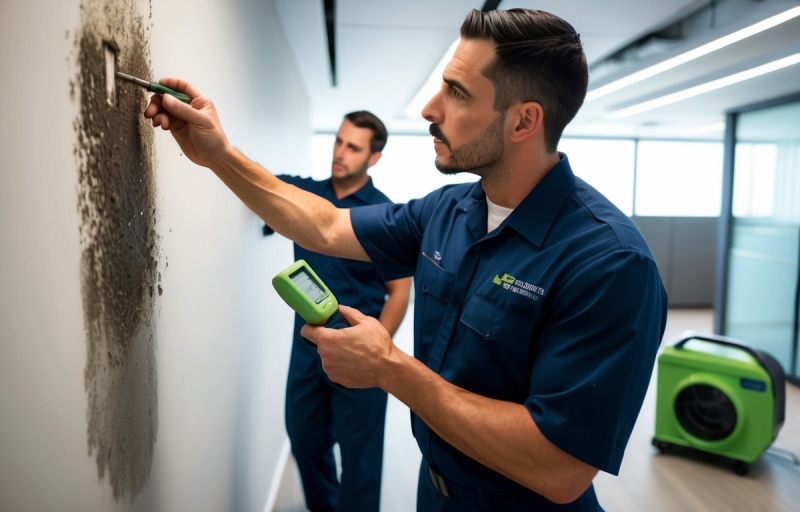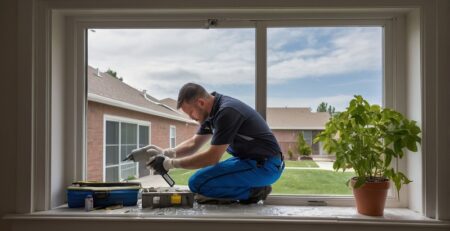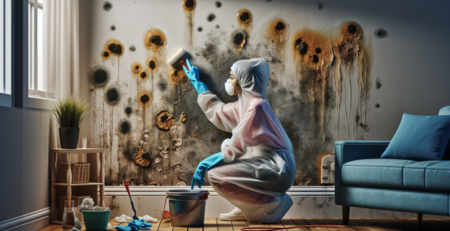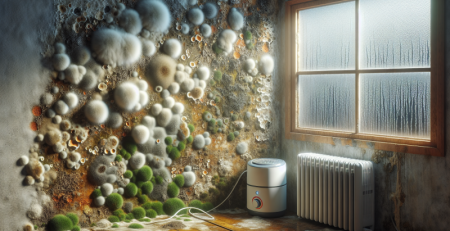The Connection Between Water Damage and Allergies
Water damage can have far-reaching effects beyond just structural issues; it can also significantly impact your health, particularly when it comes to allergies. Many homeowners in Central and Northern New Jersey may not realize that the presence of excess moisture in their homes can lead to the growth of mold and mildew, which are common allergens. At Kraus Restoration, NJ’s leaders in water damage restoration, we understand the critical connection between water damage and allergy symptoms. Our mission is to help those who have experienced property damage due to water, mold, or fire by providing professional, 24/7 emergency services. With our IICRC certified experts, we ensure that your home is not only restored to its pre-damaged condition but also made safe and healthy for you and your family. Whether it’s stormwater runoff, sewage backup, or mold cleanup, our comprehensive services are designed to address all aspects of water damage, helping you breathe easier in your home. If you suspect that water damage may be affecting your indoor air quality and contributing to allergy issues, don’t hesitate to reach out to us for immediate assistance.
Understanding How Water Damage Creates Allergen Havens
Water damage is a significant concern for homeowners and businesses alike, not only due to its immediate effects on property but also because of its long-term implications for health, particularly in relation to allergies. When water infiltrates a building, it creates an environment conducive to the growth of various allergens, including mold, mildew, and dust mites. Understanding how water damage fosters these allergen havens is crucial for maintaining a healthy indoor environment.
Water damage can occur from various sources, including flooding, leaks, and high humidity levels. According to the Environmental Protection Agency (EPA), even small amounts of water can lead to mold growth within 24 to 48 hours if the conditions are right. Mold spores are ubiquitous in the environment, and when they find a damp surface, they can proliferate rapidly. This is particularly problematic in areas like basements, bathrooms, and kitchens, where moisture levels are often higher.
Mold is one of the most common allergens found in homes. It releases tiny spores into the air, which can trigger allergic reactions in sensitive individuals. Symptoms can range from mild, such as sneezing and nasal congestion, to severe, including asthma attacks and respiratory distress. The presence of mold can also exacerbate existing health conditions, making it essential to address water damage promptly to prevent mold growth.
In addition to mold, water damage can lead to the proliferation of dust mites, another common allergen. Dust mites thrive in humid environments, and their populations can increase significantly when water damage occurs. These microscopic creatures feed on organic matter, such as skin flakes, and their waste products can trigger allergic reactions. According to the American Academy of Allergy, Asthma & Immunology, dust mites are a leading cause of asthma and allergy symptoms in many individuals.
Furthermore, water damage can lead to structural issues within a building, creating hidden pockets of moisture that can harbor allergens. For example, waterlogged insulation or drywall can become a breeding ground for mold and dust mites, even if the visible signs of water damage have been addressed. This underscores the importance of comprehensive water damage restoration, which not only addresses the visible damage but also ensures that all potential sources of moisture are eliminated.
The connection between water damage and allergies is not merely anecdotal; research supports the link. A study published in the journal "Environmental Health Perspectives" found that children living in homes with water damage were significantly more likely to develop asthma and other respiratory issues. The study highlighted the importance of addressing water damage not only for property preservation but also for public health.
To mitigate the risks associated with water damage and allergens, it is essential to take proactive measures. Here are some steps that can be taken:
- Regularly inspect your home for signs of water damage, such as stains, mold growth, or musty odors.
- Address leaks and moisture issues promptly to prevent mold growth.
- Use dehumidifiers in areas prone to high humidity, such as basements and bathrooms.
- Ensure proper ventilation in your home to reduce moisture levels.
- Consider professional water damage restoration services to thoroughly address any issues.
- Regularly clean and maintain your HVAC system to prevent the circulation of allergens.
In conclusion, understanding how water damage creates allergen havens is vital for anyone concerned about indoor air quality and health. The relationship between water damage and allergens like mold and dust mites is well-documented, and the implications for health are significant. By taking preventive measures and addressing water damage promptly, individuals can protect themselves and their families from the adverse effects of allergens. For more information on how to address water damage and its implications, consider visiting our water cleanup services or learn more about our mold cleanup services. If you have any questions, feel free to contact us for assistance.
Common Allergens Associated with Water-Damaged Environments
Water damage can create an environment that fosters the growth of various allergens, significantly impacting indoor air quality and the health of occupants. When water infiltrates a building, whether due to flooding, leaks, or high humidity, it can lead to the proliferation of mold, dust mites, and other allergens that can trigger allergic reactions and respiratory issues. Mold is one of the most common allergens found in water-damaged environments. It thrives in damp conditions and can release spores into the air, which can be inhaled by individuals, leading to symptoms such as sneezing, coughing, and skin irritation. Common types of mold associated with water damage include Stachybotrys chartarum, commonly known as black mold, and Aspergillus species. These molds not only cause allergic reactions but can also lead to more severe health issues, particularly in individuals with compromised immune systems.
Dust mites are another prevalent allergen in water-damaged environments. These microscopic creatures thrive in humid conditions and are often found in bedding, upholstery, and carpets. When water damage occurs, the increased moisture levels can create an ideal habitat for dust mites, leading to an increase in their population. Exposure to dust mite droppings can trigger asthma attacks and allergic reactions, making it essential to address any water damage promptly to mitigate their presence.
Additionally, water damage can lead to the growth of bacteria and other microorganisms that can also act as allergens. Certain bacteria can thrive in damp environments and may contribute to respiratory issues when inhaled. Furthermore, the presence of stagnant water can attract pests such as cockroaches, whose droppings and body parts can also become airborne allergens.
To effectively manage and reduce allergens in water-damaged environments, it is crucial to engage in thorough water cleanup and mold remediation. Professional services can help ensure that all traces of moisture are eliminated, and any mold growth is properly addressed. For more information on how to tackle these issues, you can visit our water cleanup and mold cleanup services. Taking proactive measures to repair water damage and maintain a dry environment can significantly reduce the risk of allergens and improve overall indoor air quality, creating a healthier living space for everyone. If you have experienced water damage, it is advisable to seek professional help to assess the situation and implement effective solutions. For further assistance, feel free to contact us.
In conclusion, the connection between water damage and allergies is a critical issue that should not be overlooked. Water damage creates an environment conducive to mold growth, dust mites, and other allergens that can significantly impact indoor air quality and overall health. Understanding this relationship is essential for homeowners and renters alike, as it highlights the importance of prompt water damage remediation and regular maintenance to prevent moisture accumulation. By addressing water damage swiftly and effectively, individuals can reduce the risk of allergy symptoms and create a healthier living space. Ultimately, staying informed and proactive about water damage can lead to improved well-being and a more comfortable home environment.









